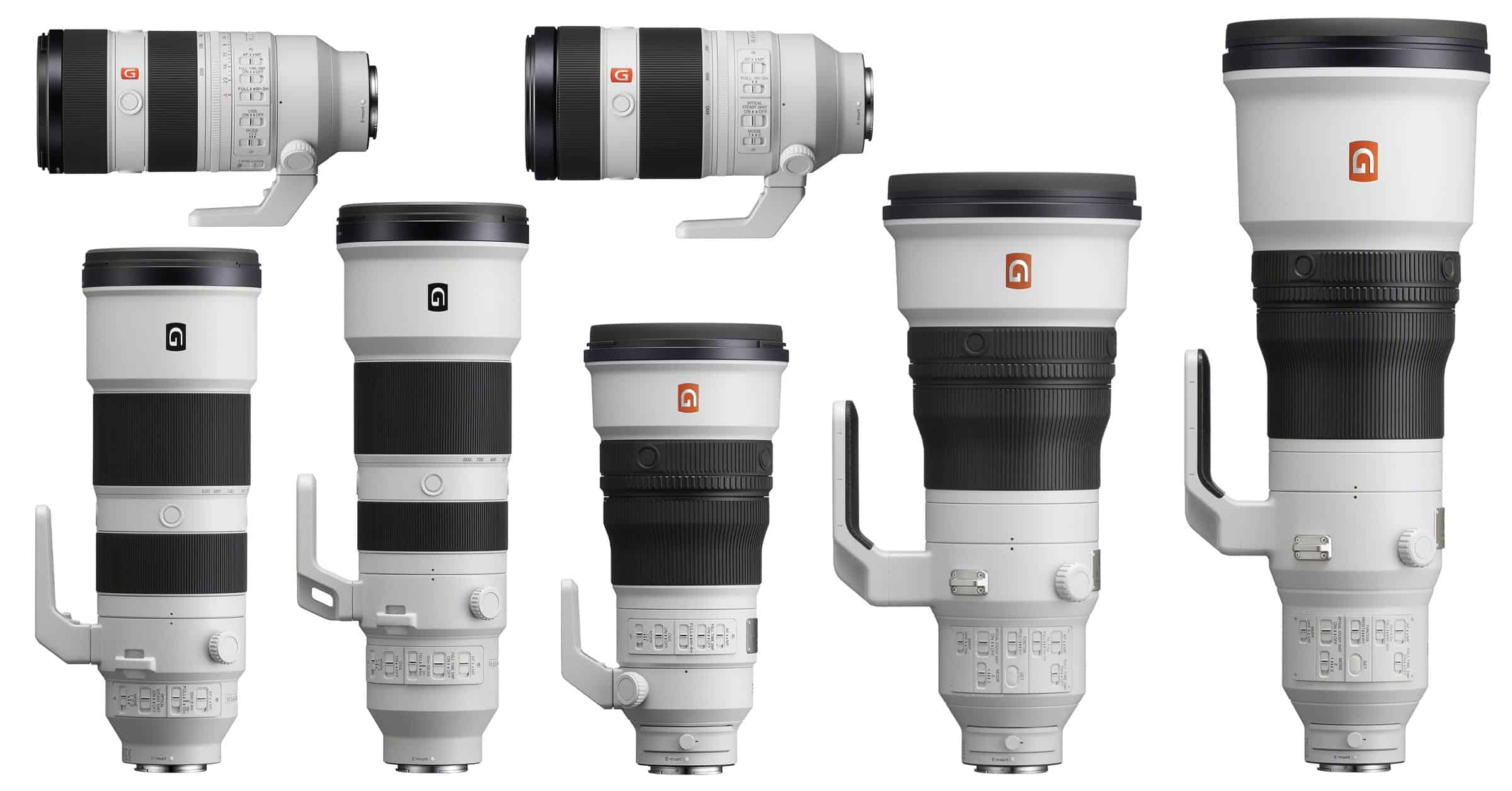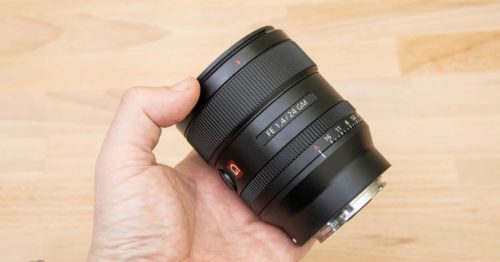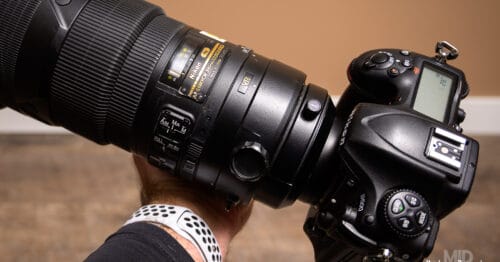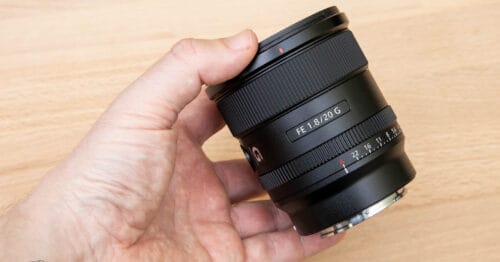UPDATE: The Sony 300mm f/2.8 GM OSS has now been launched. Click here for the full specifications and pricing details, or head straight to these stores to place a pre-order: B&H / Adorama / WEX (UK) / Amazon
In January 2023, Sony announced that a 300mm f/2.8 GM lens was finally in development for its Alpha mirrorless camera system. The announcement contained no photos of the lens and few details other than a probable “early 2024” launch date. Fast forward to this week, August 2023, and images started to appear on social media, taken at the World Athletics Championship in Budapest, that claimed to be shot with the not-yet-revealed Sony 300mm f/2.8 GM lens.
The claims certainly had merit. Both photographers tagging their social media images with the lens name have known ties to Sony, and it makes perfect sense that Sony would be testing a lens like this at a major sporting event. After all, it’s clear their target is to have it in production and readily available for the major photo agencies before the Paris Olympics in 2024.
Armed with this information, I figured it might be possible to get a glimpse of this lens in action. It’s easy to hide a new camera or heavily disguise it with black tape. Some manufacturers have even been known to put the guts of a new camera inside an old body during the testing phase. A large white 300mm f/2.8 lens is a much bigger issue, which is why today I can reveal the first detailed images of this brand-new lens out in the wild. Images that are detailed enough to answer many of the questions Sony shooters have had on their minds.
!!! Please Note !!!: All the photos in this post were licensed (yes, with $$$) from the photographer (Fotorunners) who took them, so that I would have the correct permissions to show them to you on this site. Unless you have also licensed the images from the photographer, you do not have permission to take them and post them on your own site. Please link to this post if you want to show people this new lens or reach out to the photographer yourself.
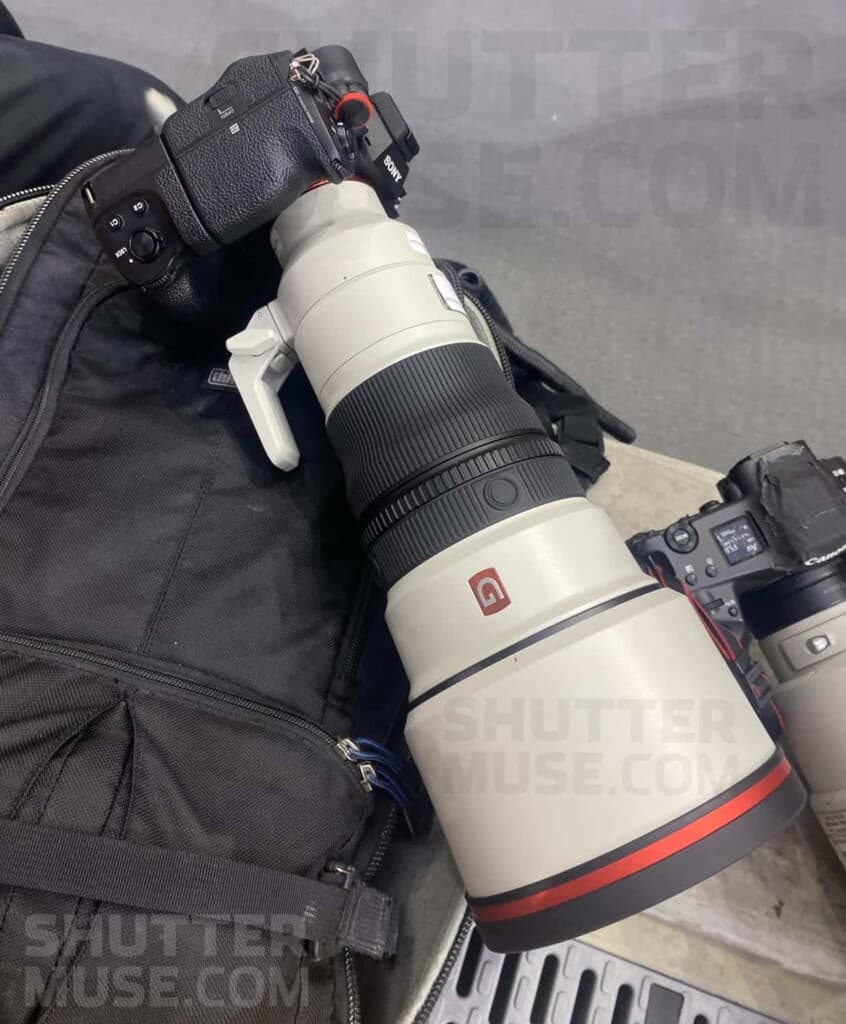
The Sony 300mm F/2.8 GM Is a Prime, Not a Zoom
When Canon announced their new RF 100-300m f/2.8 lens, many asked whether Sony would follow suit and offer an f/2.8 zoom instead of a prime. That’s not the case. From the photos, it’s clear that this lens has a focus ring but no zoom ring. This is a 300mm f/2.8 prime lens. I always predicted that this would be Sony’s path, and I am glad. Sony has always leaned heavily on the marketing value of “lightest ever.” The lightest 400mm f/2.8, the lightest 600mm f/4, the lightest 70-200mm f/2.8, and so on.
Some will complain that this lens isn’t a zoom, but there’s no doubt Sony’s lens will be significantly lighter than the Canon RF 100-300mm. Canon’s lens also comes in at around $10K, whereas I expect Sony’s 300mm f/2.8 to come in much cheaper. A price of between $7000 and $7500 would not surprise me.
Would it have been better to create an f/2.8 zoom instead of a prime? This question will undoubtedly get many answers on the internet in the next few months. Most of those answers will come from people who have: 1. never owned a 300mm f/2.8 lens in their life, 2. have no intention of buying the Canon or Sony lens, and 3. are heavily invested in one or other brands. Keep that in mind when you read what the keyboard warriors have to say.
My choice? I shoot both Canon and Sony. I could buy either lens, but I’ll choose the Sony. I loved my Canon EF 300mm f/2.8. It played a big part in creating some of my favorite images. I have always looked forward to the day when I can buy a lightweight, designed-for-mirrorless 300mm f/2.8 lens that’s easy to travel with. A lightweight prime lens like this pairs much better with a 600mm f/4 lens for anyone who wants to travel with both, whether for shooting sporting events or wildlife. The Canon RF 100-300mm lens has merit for anyone who wants to replace a 70-200mm f/2.8 and a 300mm f/2.8 prime, though.
The significantly smaller size, lighter weight, and significantly lower price of the Sony option will also benefit those wildlife photography enthusiasts who have historically gravitated to using a 300mm f/2.8 with 1.4x and 2x extenders when a 400mm f/2.8 or 600mm f/4 lens is beyond their budget. In the coming years, alongside significant use in the professional world, I expect to see many of these lenses in the hands of non-professional, retiree-age bird and wildlife photographers. On the Canon side, the size, weight, and price of the Canon RF 100-300mm lens will probably keep similar usage at a much lower level in that camp, even if they do release the rumored variable teleconverter.
The Sony 300mm f/2.8 Doesn’t Have a Built-In Extender
Also clear from these photos is that the Sony 300mm f/2.8 doesn’t contain a built-in extender. While Sony has no current history of including such a feature, Nikon’s new(ish) Z Mount 400mm f/2.8 TC and 600mm f/4 TC lenses contain a handy built-in 1.4x extender that can be engaged with the flick of a switch. The feature has received a lot of praise from the pro community, resulting in much speculation as to whether Sony would include something similar on their 300mm lens.
While there’s no denying the convenience of a feature like this -I enjoyed it immensely when I owned the Canon 200-400 with its built-in extender- there are significant weight and cost penalties for its inclusion. For those that generally shoot at 300mm, you’d be forced to carry that extra weight for little reason. I can see both sides to this argument, but I’m not surprised that Sony has chosen to keep things light and hit a lower price point. I still expect this lens to perform exceptionally well when paired with Sony’s 1.4x and 2x extenders. With-extender performance has always been a significant strength of Sony’s super-telephoto lenses and their 70-200mm f/2.8 GM II.
New Style of Lens Hood
The new Sony 300mm f/2.8 GM lens uses a different lens hood locking mechanism to the existing 400mm f/2.8 GM and 600mm f/4 GM lenses. Whereas the 400mm and 600mm lenses use a fiddly locking knob, the new 300mm f/2.8 uses a large button similar to that seen on smaller lenses like the Sony 70-200mm f/2.8 GM II. This will be a significant usability improvement over the existing locking knob system.
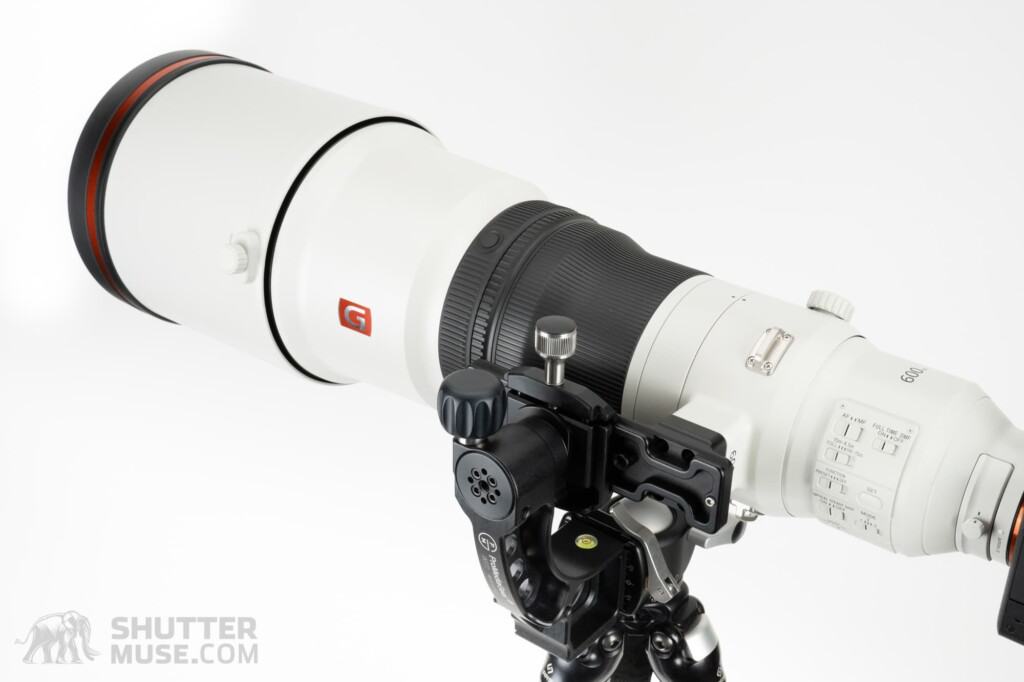
The Lens Foot Is Very Small and Tool-Less
The new Sony 300mm f/2.8 GM lens uses the same lens foot style as the 70-200mm f/2.8 GM II and the 200-600mm f/5.6-6.3. This foot is easily removable without tools, unlike the larger one found on the 400mm f/2.8 GM and the 600mm f/4 GM. Photographers often choose a 300mm prime lens when they want to hand-hold their setup and remain highly mobile, so it makes sense that the foot can be quickly removed in the field for an even lighter hand-holdable kit.
The Lens Is Incredibly Light
As mentioned, Sony likes to claim the award for the “lightest ever” lens of a particular type. It would be easy to take the top spot for a mirrorless 300mm f/2.8 prime because there are no competitors. Canon has chosen a weightier zoom option, and Nikon hasn’t filled this hole in the Z Mount lineup yet. I suspect Nikon will also decide to make a zoom since that is what they did in the DSLR days with the F-Mount 120-300mm f/2.8, so this could leave Sony bragging about winning a one-horse race. Still, Sony shooters have become accustomed to getting lightweight gear options, and it’s a reason many people choose to use that system.
The photographer who took these photos in Budapest was told that the new 300mm f/2.8 GM lens had a similar weight to the 70-200mm f/2.8 GM II zoom lens. If this turns out to be true, it would be remarkable. The 70-200mm f/2.8 GM II weighs a mere 2.3 lbs (1045 g)! For reference, the new Canon RF 100-300mm f/2.8 weighs 5.7 lbs (2590 g), and the old Canon EF 300mm f/2.8 weighed 5.18 lbs (2350g). I suspect that what my contact was told was a slight exaggeration. It seems to defy physics a little too much. Still, even if the lens is 50% heavier than the 70-200mm f/2.8 GM II, this would make it a full 2.2 lbs/1 kg lighter than the Canon RF 100-300mm. We will have to wait for the official announcement for confirmation, but I have high hopes that this lens might come in under the 3.3 lb / 1.5 kg mark.
It Has All The Usual Buttons, But No Aperture Ring
This close-up image shows that the new lens has all the usual switches found on Sony super-telephoto lenses. We’ve got three OSS modes, a switch to enable full-time DMF (direct manual focus), a focus limiter switch, and an AF/MF switch. Perhaps there was some conjecture as to whether the lens would include a manual aperture ring since this was recently added to the 70-200mm f/2.8 GM II lens. That turns out not to be the case. There is clearly no manual aperture ring on this lens.
Not Too Big, Not Too Small
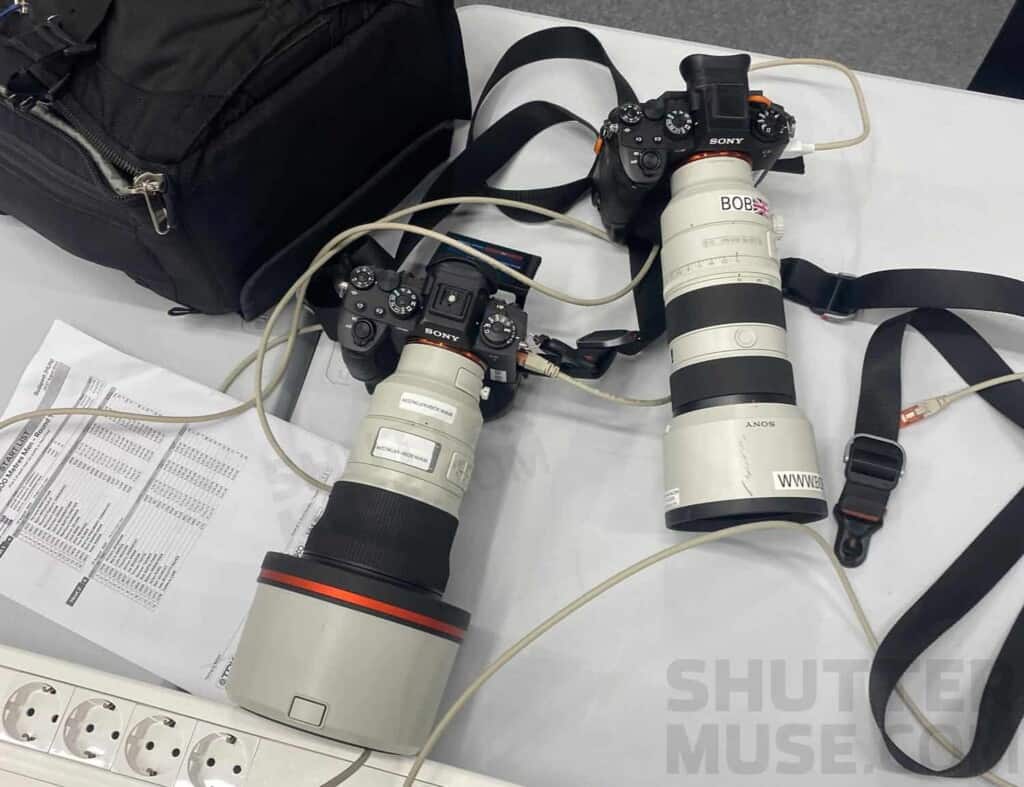
Optical physics comes into play when it comes to lens length. Those dreaming of a significantly smaller 300mm lens than we’ve seen before were dreaming. Without using diffractive optics or a collapsible zoom design, there’s no way around it. From the photos, the new Sony 300mm lens is exactly the size I would expect it to be for a lens with a standard optical design. ie no diffractive/fresnel elements. In this photo, you can see it alongside a 70-200mm f/2.8. Remember that the 70-200 has its lens hood in the forward-facing position, while the Sony has its hood in the read-facing position. Based on this comparison, I guess the lens will be just over 11.5 inches long.
When Will It Be Officially Released?
Sony representatives were at the World Athletic Championships with these lenses. They only made minimal efforts to disguise the lens with tape over the model nameplate, so they must have known there was a strong chance images would get out into circulation. It’s also clear that they gave photographers Bob Martin and Nick Didlick permission to tell the world that they were using the lens in Budapest. This suggests that the lens is not too far from an official announcement. I have no concrete information on this, but if I had to guess, I’d say we’ll hear all about it in December 2023 or January 2024, alongside a new a9 III camera. Some stores already have their product pages ready for the lens.









